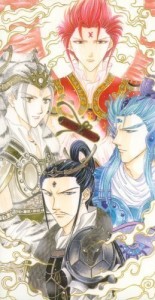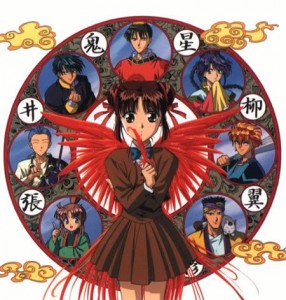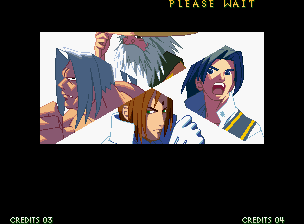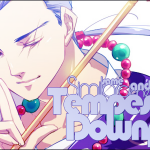Tempest’s Downpour – Anime In-Jokes 2: Four Beast Deities Edition
A typical fan watches a typical anime or plays a typical J-RPG, and suddenly the protagonists encounter a tiger, a tortoise, a phoenix and a dragon. A Japanese audience nods and laughs, while a good half of the American audience stares with wide eyes.
In characteristic Japanese fashion, a joke has been made, but hasn’t been explained. These four beasts are so prevalent in Japanese society from ancient carvings to statues outside of a temple that explaining their occurrence would be like an American explaining the arches in a McDonald’s sign.
It all started around the 7th century, when Japan was in the midst of adopting China’s administrative practices [1], as well as China’s astrology. In ancient Chinese astrology, there are 28 constellations divided into four sectors, like a compass: North, South, West and East [2].
Each sector contains 7 constellations and is guarded by a beast deity. Genbu, the black tortoise with serpentine features, is to the North; Suzaku, the vermillion phoenix, is to the South; Byakko, the white tiger, is West and Seiryuu, the azure dragon, is East. There is a fifth deity that is the strongest, though it is rarely mentioned in Japan. Also, despite the fact that all of this is involved with astrology, it has no relation with the Chinese zodiac [3].
According to Julie He, from Shanghai, China, the four beasts are considered good luck symbols in China, rather than gods or deities [4]. Meanwhile, they are viewed as guardian spirits in Japan, with Seiryuu protecting Kiyomizu Temple in Kyoto [5].
These four beasts appear in anime either as side characters/foes or as the overarching plot of a story. Fushigi Yugi focuses on the tale of the four gods, as well as the Shi Jin Ten Chi Sho of Chinese mythology [6], as the base storyline for all its incarnations: an anime, two manga series and several video games.

The Four Beast Gods in Fushigi Yugi
The original story of Fushigi Yugi revolves around Miaka Yuki, a middle-school student who discovers the Shi Jin Ten Chi Sho (literally Four Gods Heaven and Earth Book) and gets sucked into it, becoming the book’s protagonist. Her best friend, Yui Hongo, meets a similar fate but with disastrous results.
The two wind up in ancient China and then get separated. Miaka is asked by the emperor of Kounan, Hotohori, to become the priestess of Suzaku. Foolhardy Miaka agrees, and quickly finds herself greeted by new friends and many surprising enemies. She embarks on a journey to find the seven seishi (celestial warrirors) of Suzaku and fulfill her duties as priestess by getting three wishes granted, all the while going through a love story no soap opera would have the guts to attempt.

The Priestess of Suzaku and 7 seishi.
Yui, meanwhile, becomes the priestess of Seiryuu and finds herself amongst enemies, all the while slowly growing convinced that Miaka has betrayed her. Nakago, a seishi of Seiryuu, ruthlessly manipulates her and he plans to use the priestess’ powers to fulfill his dreams of becoming a God.
The series incorporates the other priestesses and seishi of Genbu and Byakko, and the twisted fates they suffered. Despite all that, the series has many comical moments and remains popular today, nearly 15 years after the anime series aired.

From left: Seiryuu, Byakko, Suzaku, Genbu.
In Yu Yu Hakusho Suzaku, Seiryuu, Byakko and Genbu cameo as the “Four Saint Beasts” who rule a portion of Demon World called Demon City [7]. They act as the antagonists in Yusuke’s third case, and each member of Yusuke’s team has to battle one Beast individually. In this case, the four beasts barely resemble the spirits they are named for, except Byakko who is an anthropomorphic white tiger.
The Last Blade, a video game series created by SNK and re-released for multiple Sony platforms since 1997, revolves around characters that contain the beast deities within themselves [8]. Kaede, the main protagonist of the series, has awakened Seiryuu within himself (and somehow turns Super-Saiyan because of it) [9]. Shinnosuke Kagami, based off Shinobu Sensui from Yu Yu Hakusho, has awakened Suzaku and was the featured boss character in the first game, as well as a playable character in the sequels.
Shigen Naoe, awakened as Byakko, was sealed inside a stone by Shinnosuke and lost a good portion of his humanity as rage overtook him. Finally, Okina no Genbu is a fighting hermit and awakened as Genbu. Okina, Shinnosuke and Shigen guarded Hell’s Portal until Shinnosuke decided to turn against his friends and release the seal on the portal. Kaede managed to stop Shinnosuke, though a sequel explores his inability to re-seal the portal completely.
The games explore the humans’ inability to control the powerful gods inside of them. Shinnosuke was manipulated by his deity’s desire to make his presence known to the ignorant humans. Shigen went berserk when his deity awoke within him from the sheer force of power. Also, Kaede spends the majority of the first game reluctant to use his god’s power for fear of losing control of himself.
Though their back story is simple, the four beast deities play important roles in Japanese entertainment. The group comprises anything from the four badguys to the four creatures an RPG character’s party depends upon the most. Whether gaming or viewing, that’s one less thing to gawk over in confusion.
[1] http://en.wikipedia.org/wiki/Japan
[2] http://tvtropes.org/pmwiki/pmwiki.php/Main/TheFourGods
[3] http://www.onmarkproductions.com/html/ssu-ling.shtml
[4] He, Julie. Personal Interview. 28 March 2010.
[5] http://en.wikipedia.org/wiki/Azure_Dragon
[6] http://www.sempai.org/~felicia/myth.html
[7] http://en.wikipedia.org/wiki/Suzaku_%28YuYu_Hakusho%29#Four_Saint_Beasts
[8] http://snk.wikia.com/wiki/Four_Gods
[9] http://snk.wikia.com/wiki/Kaede


















Very interesting read. Good work my friend ^^
Another use of these 4 are in the game Tenchu2:Birth of the stealth assassins. The 4 lords of the “burning dawn” are named Genbu, Suzaku, Byakko, and Seiryuu. Had to admit I lol’d when I saw those names and said “thats where they got those names!”
[…] Finally, the Eastern Zodiac and Feng Shui perform important roles in divination as well as the everyday lives of Onmyouji. The Zodiac was a heavy influence on the calendars Onmyouji were put in charge of which eventually lead to the incorporaton of the Four Gods into Onmyodo. (Hey guys, remember Anime In-Jokes 2?) […]